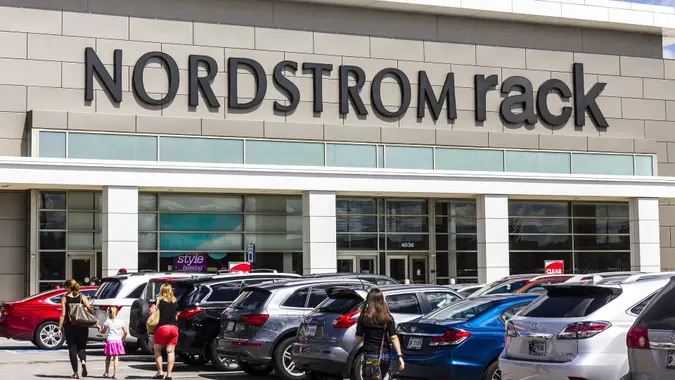Who Benefits the Most from SNAP?

Commitment to Our Readers
GOBankingRates' editorial team is committed to bringing you unbiased reviews and information. We use data-driven methodologies to evaluate financial products and services - our reviews and ratings are not influenced by advertisers. You can read more about our editorial guidelines and our products and services review methodology.

20 Years
Helping You Live Richer

Reviewed
by Experts

Trusted by
Millions of Readers
The Supplemental Nutrition Assistance Program (SNAP), formerly known as the food stamp program, is a federal initiative designed to assist individuals and families struggling with food insecurity in the United States. While the primary goal of SNAP is to provide nutritional support, the benefits of the program extend beyond just the recipients.
The U.S. Department of Agriculture estimates “that in a weak economy, $1 in SNAP benefits generates $1.50 in economic activity”, meaning that even in a down economy, SNAP is not only boosting people, but also the economy as well. Let’s explore who benefits the most from SNAP and how it impacts various sectors of society.
1. Low-Income Families and Individuals
- Direct Beneficiaries: The most immediate and apparent beneficiaries of SNAP are low-income families and individuals who receive the assistance. This program plays a crucial role in reducing food insecurity and hunger, particularly among vulnerable populations including children, the elderly, and the disabled.
- Improved Nutrition and Health: SNAP recipients gain access to healthier food options, which can lead to improved overall health, reduced healthcare costs, and better educational outcomes for children.
2. Children and Future Generations
- Healthy Development: Children in households receiving SNAP benefits are more likely to have adequate nutrition, crucial for their physical and cognitive development.
- Long-Term Benefits: Studies have shown that children who have access to SNAP are less likely to experience developmental delays and have better health outcomes as adults.
3. Local Economies and Retailers
- Economic Stimulus: SNAP benefits are spent at local grocery stores and farmers’ markets, stimulating the local economy. Every dollar in SNAP benefits generates about $1.70 in economic activity, according to some estimates.
- Support for Retailers: Grocery stores, supermarkets, and local farmers benefit from increased sales due to SNAP. This can lead to job creation and sustainability for small businesses.
4. Agricultural Sector
- Market Stability: By providing a steady demand for food products, SNAP helps sustain the agricultural market, benefiting farmers and producers.
- Reduction in Food Waste: Through programs that allow SNAP benefits to be used at farmers’ markets, the program helps move produce that might otherwise go unsold, thereby reducing food waste.
5. Taxpayers and Public Health System
- Reduced Healthcare Costs: By improving nutrition and health among low-income populations, SNAP potentially reduces healthcare costs borne by taxpayers.
- Preventive Healthcare: Adequate nutrition is a form of preventive healthcare, as it can reduce the prevalence of diet-related diseases, ultimately saving on public health spending.
6. Community Well-being and Social Stability
- Social Cohesion: By alleviating the stress of food insecurity, SNAP contributes to the overall well-being and stability of communities.
- Reduction in Poverty and Inequality: SNAP is an essential tool in broader efforts to reduce poverty and narrow the gap of inequality, especially in times of economic downturn.
Conclusion
While SNAP primarily targets food insecurity among low-income individuals and families, its ripple effects benefit society in numerous ways. From boosting the economy and supporting the agricultural sector to improving public health and fostering community well-being, the advantages of SNAP extend far beyond the immediate alleviation of hunger. As such, SNAP is not only a social safety net program but also a vital investment in the nation’s health, economy, and future.
Editor's note: This article was produced via automated technology and then fine-tuned and verified for accuracy by a member of GOBankingRates' editorial team.
 Written by
Written by  Edited by
Edited by 

























